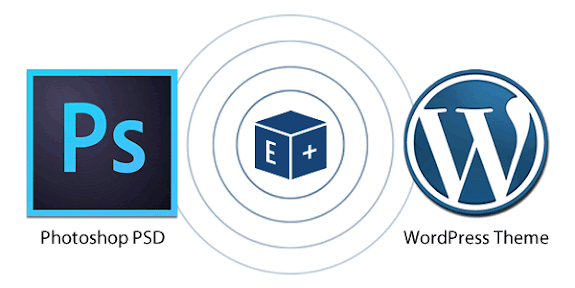How to Easily Convert your PSD Designs into WordPress website
Converting PSD designs to a responsive WordPress website involves several steps. Here's a general guide on how to do it:
Slice and Export PSD Elements: Start by slicing and exporting all the elements from your PSD file, a crucial step in WordPress development. This includes images, icons, fonts, and design elements. Use a graphic design software like Adobe Photoshop to do this.
Set Up Your WordPress Environment:
Install WordPress: If you haven't already, install WordPress on your web hosting server.
Choose a Theme: Select a responsive WordPress theme that closely matches your PSD design. This will provide you with a good starting point.
Develop the HTML/CSS:
Create HTML Structure: Write the HTML code for your website based on your PSD design. Use semantic HTML5 markup for better SEO and accessibility.
CSS Styling: Write CSS code to style your website elements. Ensure that your CSS is responsive, making use of media queries to adapt the layout to different screen sizes.
Create Custom Templates:
WordPress has a template hierarchy. Create custom templates for different sections of your website, such as the homepage, blog, portfolio, etc., using PHP. You can use the WordPress template hierarchy as a guide.
Integrate WordPress Tags and Functions:
Replace static content in your HTML with WordPress tags and functions. For example, use the_title(), the_content(), and the_permalink() to dynamically populate your content.
Enqueue Styles and Scripts:
Add your CSS and JavaScript files to WordPress by enqueueing them properly using wp_enqueue_style() and wp_enqueue_script() functions.
Create Custom Fields and Post Types:
If your design includes custom data fields or content types, you may need to create custom fields and post types using plugins or code.
Make it Responsive:
Test your website on various screen sizes and devices to ensure responsiveness. Adjust your CSS and layout as needed.
Optimize for SEO:
Install an SEO plugin like Yoast SEO to optimize your website's SEO settings, meta tags, and sitemaps.
Test and Debug:
Thoroughly test your website for functionality, compatibility, and performance issues. Debug any errors that may arise during this phase.
Security and Backup:
Implement security measures, such as installing a security plugin and regularly backing up your website.
Optimize Performance:
Use caching plugins and optimize images to improve website performance.
Launch and Monitor:
Finally, launch your responsive WordPress website. Keep an eye on it to address any issues that may arise post-launch.
Converting PSD designs to a responsive WordPress website can be complex, especially if you're not experienced with web development. If you're not comfortable with coding, you may want to consider hiring a professional WordPress developer or a web development agency with expertise in Squarespace development to ensure the best results.



Comments
Post a Comment